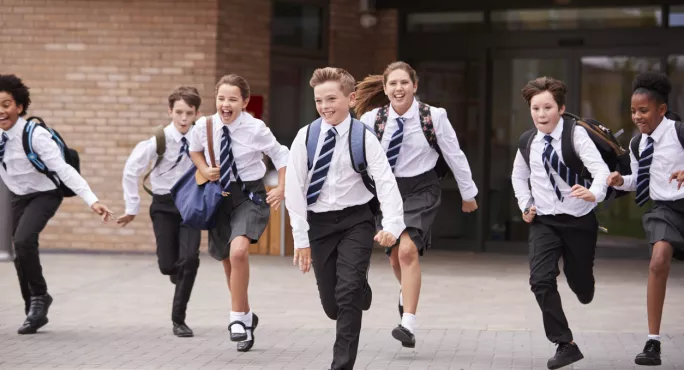- Home
- The school with breaks after every lesson and no phones
The school with breaks after every lesson and no phones

Last week the keys for the newest secondary in Scotland were officially handed over, more than a decade on from the last time a brand new school was opened.
Here we take a look at how Bertha Park High in Perth and Kinross could be able to capitalise on starting from scratch, including its plans to have just four lessons every day and to give its pupils “brain space” after every class.
When will the school open?
The school opens at 9am on Wednesday 21 August.
How many pupils will it have?
The school has capacity for 1,100 pupils but will start out its life with around 200 S1 and S2 students. The S2s were educated last year at Perth Grammar School and in June Bertha Park High’s new teachers joined them at Perth Grammar so they could get to know their pupils before the summer holidays, and the move to the new school in August.
Long read: Building a school from the ground up
Short read: School mobile phone ban ‘wonderful’, says psychologist
Related: Why the design of school buildings matters
How many teachers will the school have?
There will be 13 principal teachers and one depute head to begin with, but ultimately the school will need 85 to 90 teachers. The new teachers will all start school in August, at least a week before other teachers in Perth and Kinross.
Who is the headteacher?
Stuart Clyde, who has been in post for a year, and who was previously head at the Community School of Auchterarder, about 15 miles away along the A9.
Why was the school necessary?
The school will largely serve the new Bertha Park housing estate, where 3,000 homes will be constructed over the course of 30 years.
How does Bertha Park High plan to capitalise on starting with a clean slate?
The school has introduced a “non-negotiable” mobile phone ban with pupils expected to store their phones in their lockers for the entirety of the school day, including breaks - but every pupil will receive an iPad free of charge to support their learning.
The school website also says that - while some schools charge for cooking ingredients and art supplies - all lessons will be free so “everyone has the same opportunities to access learning, irrespective of their background”.
Anything else?
The school has taken the opportunity to think carefully about how it wants the day to run so rather than the traditional seven periods of 50 minutes, it has opted for just four lessons every day lasting 80 minutes. There will be a 10-minute break after every lesson “allowing brain space”.
Why has the school opted for longer lessons?
The school believes this will lead to better relationships between pupils and staff; opportunities for deeper learning, including trips and outdoor learning; and less time wasted moving between classes. It even thinks the move could have a positive impact on pupil mental health because pupils will have “less to juggle each day”.
Will they have a uniform?
Yes, there is a purple blazer and a tartan tie, both of which were designed by visual communication and design students at Perth College, University of the Highlands and Islands.
What was the last brand new secondary to open in Scotland?
The most recent secondary to open in the country - not including mergers between existing schools - was Meldrum Academy in Aberdeenshire in 2002.
Are there any lessons Bertha Park can learn that launch?
Andrew Sutherland was the headteacher when Meldrum Academy opened. He said that the school was “too liberal in the early phase with discipline [because] the pupils were S1-S2”.
He also said that by the time the oldest pupils reached S4 the importance of having an S5-S6 cohort for them to look up to became apparent.
Mr Sutherland continued: “What was evident by the time the oldest year group was in fourth year was how much a senior school - S5-S6 - is missed in reinforcing and driving a positive ethos…This was, in my opinion, the most challenging year for the school [but] once we became an S1-S6 academy, the pupil ethos was consistently marvellous.”
Register with Tes and you can read two free articles every month plus you'll have access to our range of award-winning newsletters.
Keep reading with our special offer!
You’ve reached your limit of free articles this month.
- Unlimited access to all Tes magazine content
- Save your favourite articles and gift them to your colleagues
- Exclusive subscriber-only stories
- Over 200,000 archived articles
- Unlimited access to all Tes magazine content
- Save your favourite articles and gift them to your colleagues
- Exclusive subscriber-only stories
- Over 200,000 archived articles



